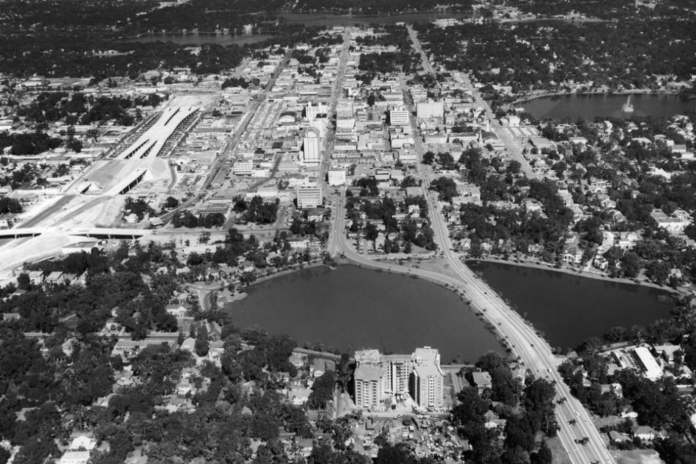By Philip Baillargeon
Interstate 4 in Orlando, Florida was built as a result of the last major federal highway construction program: The Federal Aid Highway Act of 1956.
Source: Getty/Archive Images
As President Biden and Democrats in Congress prepare to debate the American Jobs Plan, the second major bill of Biden’s presidency, they will be forced to justify every portion of the massive $2.3 trillion bill. Republicans are fixating on the cost of the bill (even though the bill is budget neutral over 15 years, reducing deficits in the long run), as well as portions of the bill they deem “not infrastructure.” Senator Marsha Blackburn of Tennessee, for example, began to circulate graphics complaining about large increases to elder care services ($400 billion to be exact) because this “human infrastructure” is not your typical roads and bridges bill. Senate Democrats have thrust these graphics back at Republicans, along with Secretary of Transportation Pete Buttigieg, urging Republicans to consider the content of the bill for its merit.
As the argument over elder care fizzled out, Republicans turned to the racial equity portions of the bill, attempting to shift the conversation toward a discussion of what counts as infrastructructure and Senate procedure. However, this argument neglects to acknowledge the segregationist nature of our highway systems and the true damage they have inflicted on marginalized groups in our country.
Most of our modern highways were authorized under the Federal Aid Highway Act of 1956, which routed many large roads directly through predominantly Black and brown communities. At times, highway planners used new highways to replace segregation laws that were recently struck down, perpetuating redlining and cutting off predominantly Black communities from economic investment and jobs. Some homes were even seized by eminent domain and destroyed.
The American Jobs Plan includes several portions to revitalize these very communities, including the updating of water lines, the revitalization of our electrical grid, and the guarantee of high-speed broadband internet at low costs. President Biden’s plan would also invest $20 billion specifically in reconnecting these communities to their cities at large. In addition to these quality of life improvements, the American Jobs Plan promises to build sustainable infrastructure, reforming old buildings and outfitting new ones with energy efficient features to decrease carbon emissions. New public transit routes will also help connect these communities to higher paying jobs, promoting the right to collectively bargain and providing employment options for individuals in these communities.
The Biden plan also seeks to advance racial equity in research, investing millions to create a new generation of scientists, mathematicians, and engineers that is more reflective of the population as a whole.
As for New York State specifically, our state received a C- on its Infrastructure Report Card. Some deficiencies the state exhibited that would be rectified by the American Jobs Plan would be the provision of low cost housing to alleviate New Yorkers who are rent burdened, child care to the 64% of New Yorkers who have no child care service available to them, and green jobs to facilitate carbon capture and combat climate change. Across all states, the Biden administration has committed to using 40% of these funds in marginalized communities.
As this bill is debated on the Senate floor, expect more questioning by Republicans concerning what can be considered infrastructure, the purpose of the Senate reconciliation process, and the cost. Remember, however, to also put the bill in its proper historical context and examine the damage it has inflicted on Black and brown communities in the United States.

